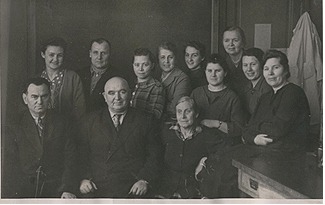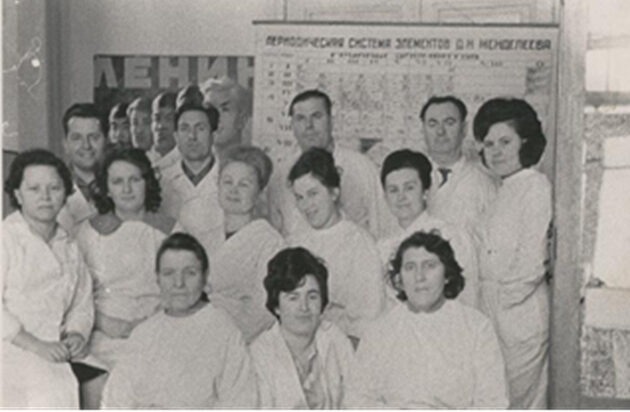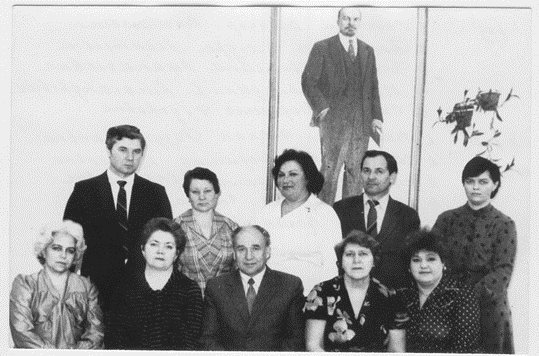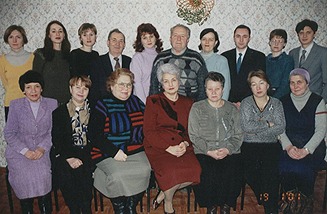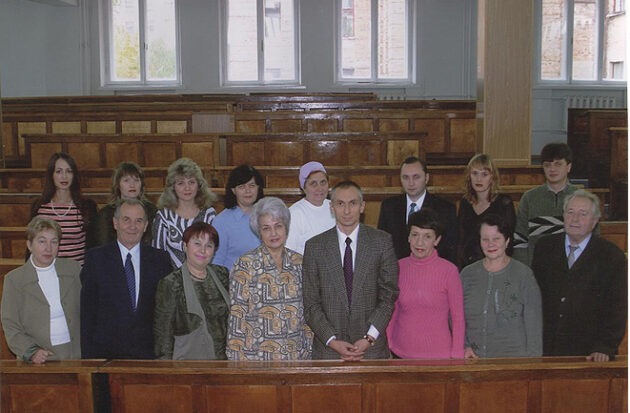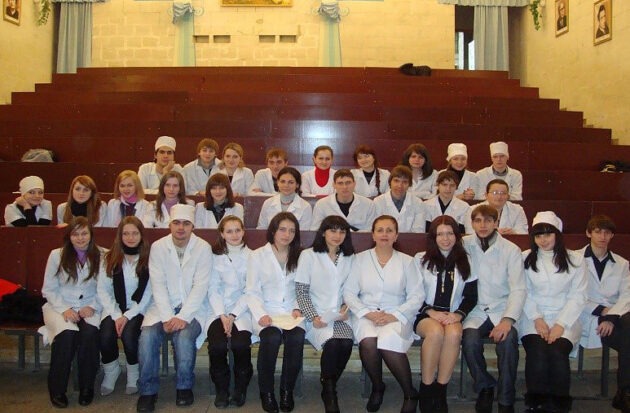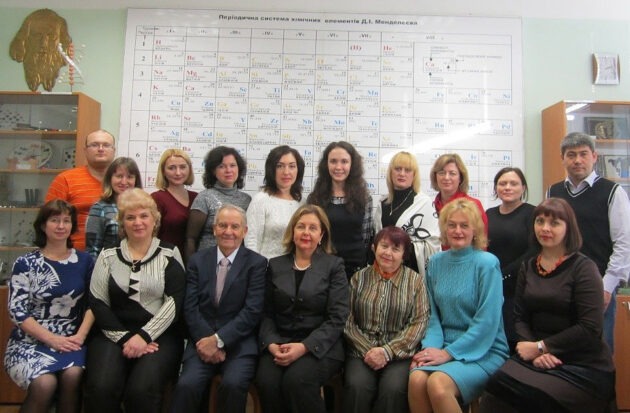The history of the department dates back to more than 200 years and is closely connected with the history of V.N. Karazin Kharkiv National University. Four different periods can be distinguished in the chemistry teaching on the department:
| Periods, years | Heads of the department |
| І period
1804–1855 yrs. |
INITIAL:
І.A. Schnaubert, F.І. Gize, М.I.Kruger, І.І.Sukhomlinov, V.А. Lapshin, P.P. Einbrodt , А.І. Khodnev, І.К. Kosov |
| ІІ period
1855–1917 yrs. |
PRE-REVOLUTIONARY:
М.М. Beketov, І.P. Osipov, G.E. Myhin, К.А. Krasuskij, V.F. Timofeev, M.O. Valiashko |
| ІІІ period
1919–1955 yrs. |
POST-REVOLUTIONARY:
G.Yu. Timofeev, F.P. Golev, E.M. Gapon, Т.V. Ass, Yu.О. Gabel, V.І. Korolev |
| ІV period
1955 yr – up to now |
MODERN:
F.M. Glebov, L.M. Andreasov, P.M. Kozarezenko, V.G. Khukhryanskiy, L.G. Shapoval, І.V. Zavgorodniy, G.О. Syrova |
The chemistry teaching on the medical faculty of university was began at the pre-revolutionary period by the chemists of Natural sciences department of Physics and Mathematics. A great contribution to the development of the department of chemistry and to the chemistry itself was made by N. N. Beketov, I.P. Osipov, V.F. Timofeev, N. A. Valiashko etc. After revolution in 1917 the chemical department appeared on the medical faculty of University. The newly formed department was headed first prof. G.Yu. Timofeev, who made a great contribution to the development of electrochemisty. After his death (1926) the department was headed by F.P. Golev and then a young scientist E. M Gapon was selected as head of the Department of Chemistry. Gapon was an author of the following text-books in chemistry: “Inorganic chemistry for physicians” (1932) and “Physical chemistry for physicians” (1932), his scientific heritage includes 167 original scientific works. After the departure of E.M. Gapon another great scientist prof. T.V. Ass headed the department for 24 years.
The Department of Organic Chemistry in the same period was headed by Prof. Yu. O. Gabel, whose lectures have always reflected the connection between chemistry and medicine. In 1947, under his direction penicillin synthesis project was began and first try to classify heterocyclic compounds was done. After the death of prof. Gabel Yu.O. the department of organic chemistry was headed by as.prof. V.I. Korolev (1954).
In 1955 the whole department of general chemistry was founded. This department was headed by as. prof. F.M. Glebov until 1962. From 1962 to 1968 the Department of General Chemistry was headed by a distinguished figure in Kharkiv University – Prof. L.M. Andreasov. During the period from 1969 to 1977 as. Prof. P.M. Kozarezenko headed the department. In 1971 the department has adopted a new education program that was fundamentally different from the previous one. This new program was supplemented and extended by a number of questions. It completely excluded repetition of school education program. First two years of studying student learned the following disciplines: 1 semester of first year they studied “General theoretical foundations of chemistry” (lectures) and “Quantitative analysis” (laboratory works); 2 semester – “Chemistry of elements” (lectures) and “Qualitative analysis” (laboratory works); during the 1 semester of second course students studied “Physical and colloidal chemistry” (lectures and practical classes) and during 2 semester – “Organic chemistry” (lectures and practical classes).
Teaching was sufficiently provided with methodological guidelines, instructions and manuals issued by the staff of the department, intensive research work was carried out. Most of the research has focused on the development of sophisticated analytical methods for determining the microquantities of elements in biological objects. The search of biologically active substances was done. In 1977 the department of general chemistry was named as general and bioorganic chemistry department. This department was headed by ass. prof V.G. Khukhryanskiy from 1978 till 1989. During the first two years students studied different chemistry: inorganic, organic, physical and colloidal as well as analytical chemistry. Preparatory Department provided training of people who study in the last grades of high school, gymnasiums, and lyceums and of those who have complete high school degree in order to get admitted to the University.
The scientific direction of the department in that period related to the study of the synthesis and reactivity of substances improving lecithin-cholesterol equilibrium. In the framework of this research economic contractual project related to the application of enamel in food and medical industry was realized. Results of this project were implemented in the national economy with high economic effect. At that period 13 teachers worked on the department: 10 of them had a degree of candidate of sciences, 2 teachers hold a position of associate professor and 3 teachers worked on the post of senior teacher. Research was focused on the development of silicone impression materials and their usage in medical practice. During this period, the department was established cooperation with different educational institutions and research organizations of Kharkiv such as Kharkiv Politechnical Institute, scientific and production association “Carbonate”, Kharkov research institute of microbiology and immunology named after I. I. Mechnikov. The search of new wax compositions and their synthesis was carried out by the researchers of the department. During this period the staff of the department received 2 patents, 40 certificates of authorship, more than 100 scientific works were published in different publishing houses. The employees of department take part in all–union, republican conventions and congresses. From 1989 till 2004 the department was headed by ass. prof. L.G. Shapoval. Under her leadership scientific topics related to the environmental protection, ecological and hygienic justification and biological prediction the potential threat of actions of biological objects belonging to nitrogen-containing compounds, phenols and ethoxylate was done. Results of this research were used to establish limits of detection of pollutants in the water of reservoirs Within the framework of the curriculum the discipline “Bioinorganic, physical and colloidal and bioorganic chemistry” was taught to 1-st year students. For teaching this discipline teachers of the department prepared and published manual and all methodological literature for all practical class. Mutual visits of lectures and practical classes were carried out by the department’s staff followed by discussions on the methodological meetings of the department to improve educational process and increase level of pedagogical skills for teachers. Advanced training courses were conducted for teachers of nurse schools on the basis of the department.Department staff took part in the educational and methodological and scientific conferences devoted to the studies of ways of activization of students’ cognitive activity at the studying of chemistry. During the leadership of ass.prof. Shapoval L.G. work on the department was carried out in different directions of educational process. In the conditions of change of training programs for students of dentistry and medical faculties methodological guidelines for students and teachers were developed. Beneficial work was carried out with new coming teachers. With the advent of these young professionals, methodical meetings met regularly on the department. Within the frame of these meetings seasoned mentors ass. prof. V.D. Chekhovskoy, ass. prof. L.P. Shapareva, ass. prof. V.M. Petiunina shared their pedagogical experience. Students were involved in the department’s scientific work, taking part in scientific students’ interacademic conferences. In 2003 L.G. Shapoval first called for interregional scientific and methodical conference “Formation of a modern concept of teaching natural sciences in medical schools”, that is held traditionally in Kharkiv National Medical University at this day.
Prof. I.V. Zavgorodniy was a head of department of bioinorganic, physical and colloidal and bioorganic chemistry from 2004 till 2009. In 2005 the department was renamed as medical and bioorganic chemistry department. Under the leadership of prof. I.V. Zavgorodniy the department has started to work at new scientific topic: “Establishing patterns of toxicodynamics and toxicokinetics of chemical compounds under cold stress”. This scientific topic was provided financing from the state budget of Ukraine. During the I.V. Zavgorodniy’s management the department updated the work plans of the department, developed 2 textbooks, control tasks of students’ test. At this instant medical chemistry teaching switched over to a credit-modular system of educational process organization.
From 2009 and by this day the department is headed by Pharm Dr., prof. Syrova G.O., academician of international academy of ecology, academician of PO «National Academy of Higher Education Sciences of Ukraine», honored Doctor of Science of the University “Lviv Stavropigion“. At the initiative of Ganna Olegivnа and under her direction the museum the department’s history was developed. Besides special methodical room was opened where students can work with books on medical and bioorganic chemistry in Ukrainian and English languages and use PC with the Internet access. In 2010 prof. G.O. Syrova proposed and initiated the performing of scientific conferences for first-year students in medical chemistry “Chemistry. Ecology. Medicine”. These students’ conferences are dedicated to the memory of chemists, ex-heads of departments or familiar events. Prof. G.O. Syrova is a n author of more than 600 scientific and methodical papers; she is a co-author of 4 national text-books in medical and bioorganic chemistry in Ukrainian language as well as in English one. Ganna Olegivna has a lot of patents, manuals, scientific manuscripts, work-books in disciplines and methodological instructions including monographs.
Department staff has an increased focus on the studying the history of the department. This resulted in the systematization of primary historical documentation and the creation of three monographs on its basis in 2010, 2015, and 2020.

